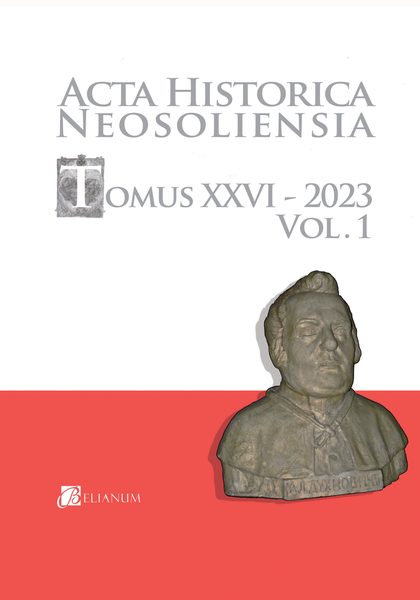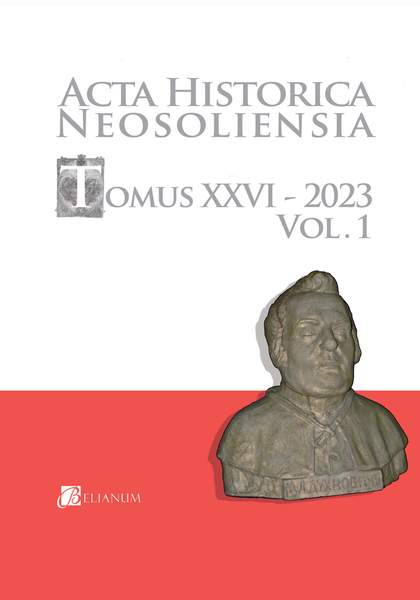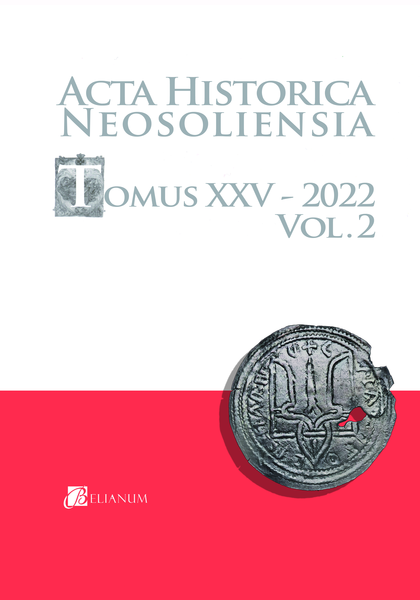Možnosti automatickej transkripcie v platforme Transkribus na príklade správ o vybavovaní sťažností občanov v období komunistickej diktatúry
MATEJ SMIDA
Katedra histórie, Filozofická fakulta, Univerzita Mateja Bela v Banskej Bystrici
Possibilities of automatic transcription in the Transkribus platform using the example of reports on the handling of citizen complaints during the communist dictatorship
Abstract: This thesis discusses the basic options of work in an application Transkribus, about its benefits, pitfalls and innovations that we presented in the selected sample of archival documents with the topic of citizen complaints during the governance of the Communist party in Czechoslovakia in the 1948-1989. Gradually we have documented the process of working with historical sources in Transkribus, preparation, transcription and the results. Because we focused on typewritten documents only, we compared the results with other ways and options of transcription, we evaluated their usability, which leads to interesting conclusions and results. The thesis is also supported by statistical indicators and pictorial schedules on the basis of which we have did specific conclusions. In the thesis we also present the issue of citizen complaints as a topic of historical research.
Keywords: Transkribus, automatic transcription, digital humanities, citizen complaints, typewritten documents.
Archív
Úplné textové verzie vo formáte PDF
- Acta historica Neosoliensia - Tomus 26, num. 1
- Acta historica Neosoliensia - Tomus 25, num. 2
- Acta historica Neosoliensia - Tomus 25, num. 1
- Acta historica Neosoliensia - Tomus 24, num. 2
- Acta historica Neosoliensia - Tomus 24, num. 1
- Acta historica Neosoliensia - Tomus 23, num. 2
- Acta historica Neosoliensia - Tomus 23, num. 1
- Acta historica Neosoliensia - Tomus 22, num. 2
- Acta historica Neosoliensia - Tomus 22, num. 1
- Acta historica Neosoliensia - Tomus 21, num. 2
- Acta historica Neosoliensia - Tomus 21, num. 1
- Acta historica Neosoliensia - Tomus 20, num. 2
- Acta historica Neosoliensia - Tomus 20, num. 1
- Acta historica Neosoliensia - Tomus 19, num. 2
- Acta historica Neosoliensia - Tomus 19, num. 1
- Acta historica Neosoliensia - Tomus 18
- Acta historica Neosoliensia - Tomus 17
- Acta historica Neosoliensia - Tomus 16
- Acta historica Neosoliensia - Tomus 15
- Acta historica Neosoliensia - Tomus 14
- Acta historica Neosoliensia - Tomus 13
- Acta historica Neosoliensia - Tomus 12
- Acta historica Neosoliensia - Tomus 11
- Acta historica Neosoliensia - Tomus 10
- Acta historica Neosoliensia - Tomus 09
- Acta historica Neosoliensia - Tomus 08
- Acta historica Neosoliensia - Tomus 07
- Acta historica Neosoliensia - Tomus 06
- Acta historica Neosoliensia - Tomus 05
- Acta historica Neosoliensia - Tomus 04
- Acta historica Neosoliensia - Tomus 03
- Acta historica Neosoliensia - Tomus 02
- Acta historica Neosoliensia - Tomus 01



